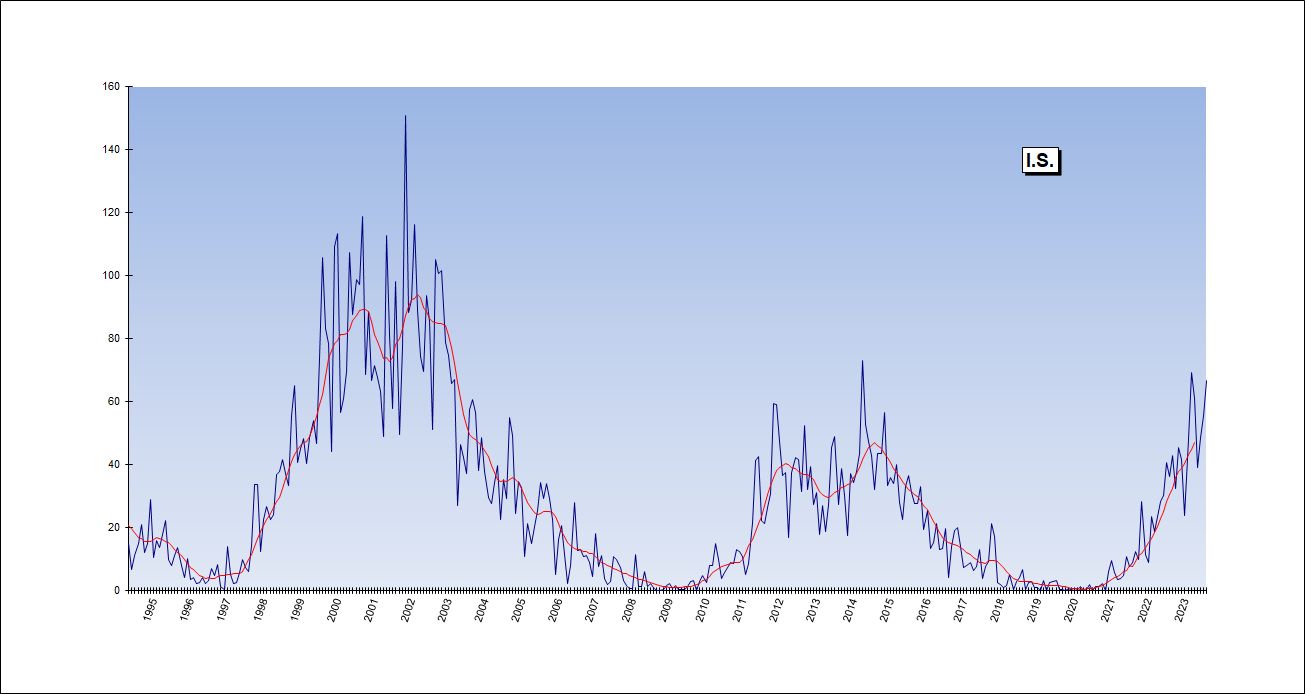Numerical expression of sunspot activity
Data for the graphics are taken from home made observations.
Updated: July 2023
It was introduced by Rudolf Wolf in 1848. Determining Wolf numbers is a
favorite amateur observing program as it can easily be performed using
small telescopes.The Wolf sunspot number includes the number of observed
single spots s as well as that of the entire spot groups g.
Wolf multiplied the number g of groups with a factor 10 in order to express
the fact that the appearance of a new group is weighted 10 times higher
than a new spot within an existing group.An isolated spot is regarded as
a separate group. The Wolf number R is combined from spot and group numbers
according to the relation: |
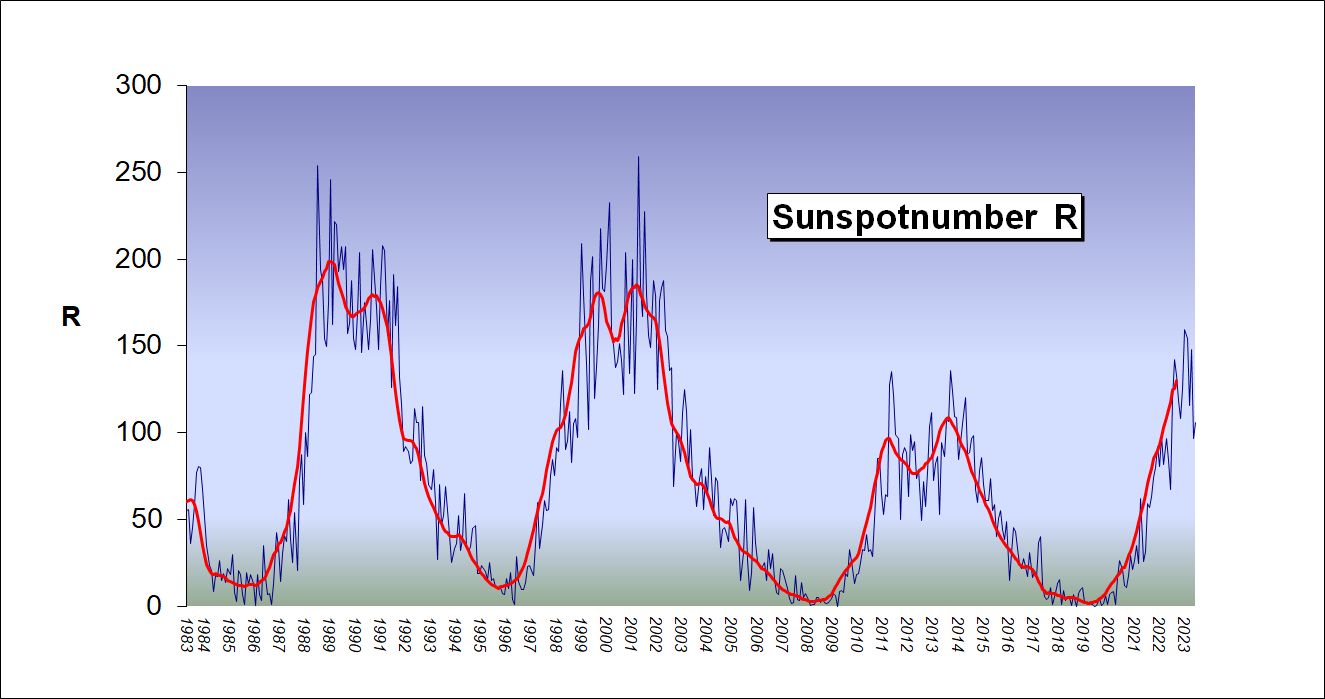
When the observer determines the spot number and the Waldmeier class of a group he/she can estimate
the area of the group by multiplying the spotnumber S with a weight factor G, representing the average
area/number ratio for the group type.The new area number Ré is obtained by adding the area numbers of all groups. |
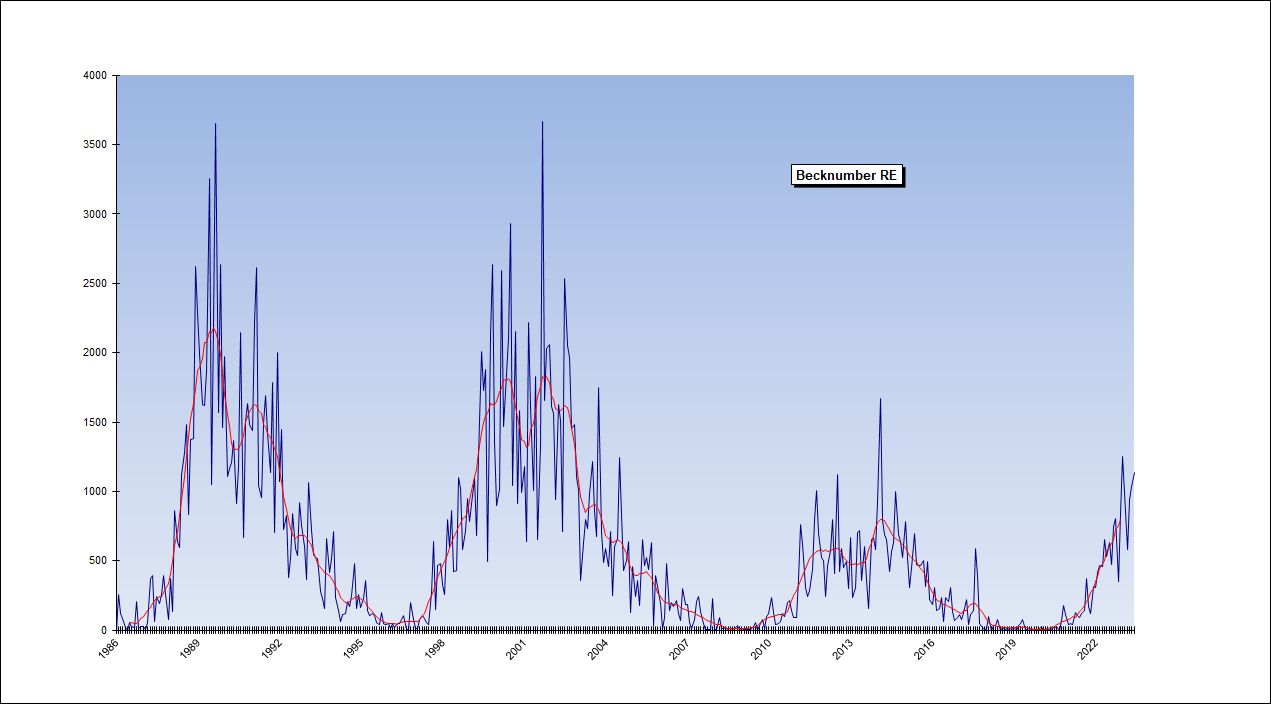
Introduced by the Norwegian Astronomical Society. The system is based on
the McIntosh Spot Classification which admits 60 possible classes.These
are arranged in a sequence giving the highest weight(60) to an F-group
with large symmetric penumbra and with complex spot distribution.
A single A-spot is assigneda CV-weight of 1. The CV-valuesof all groups
are added and thus form the measure of spot activity.
|
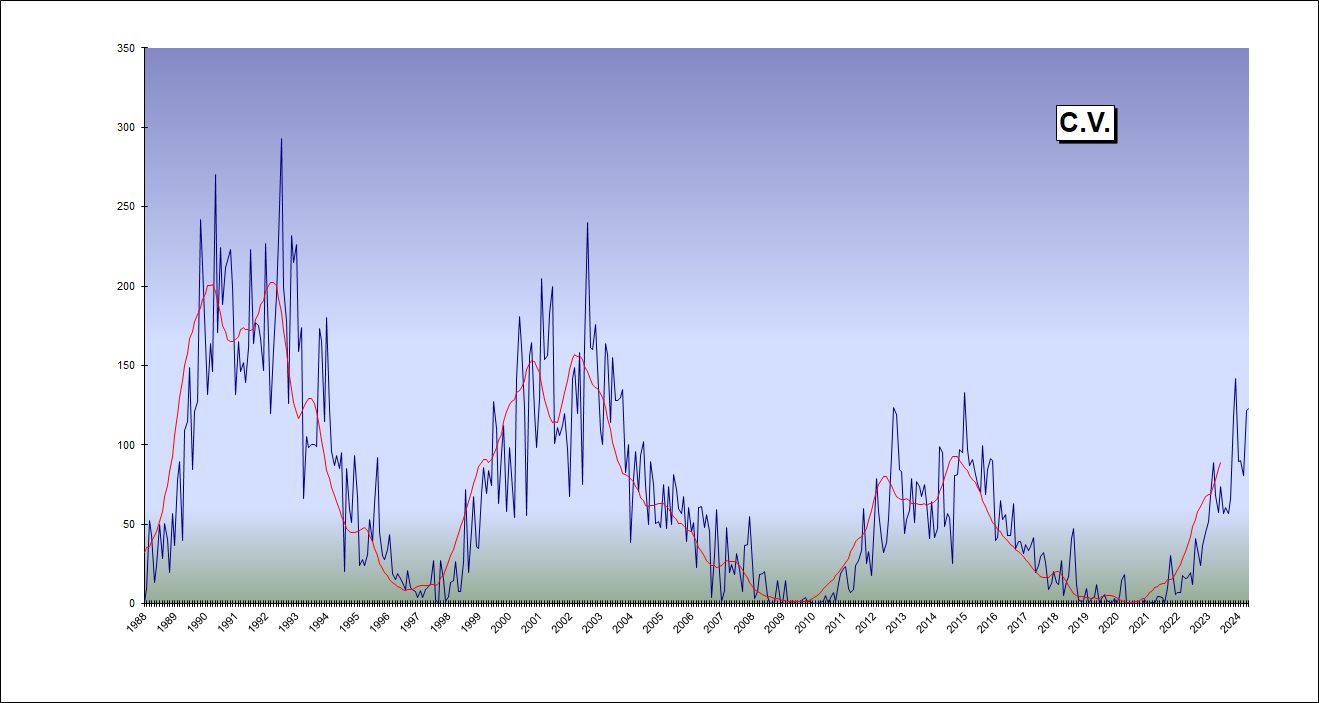
Another sunspot number, one which considers the formation of penumbrae
as signs of high solar activity.The Pettisindex is defined as: |
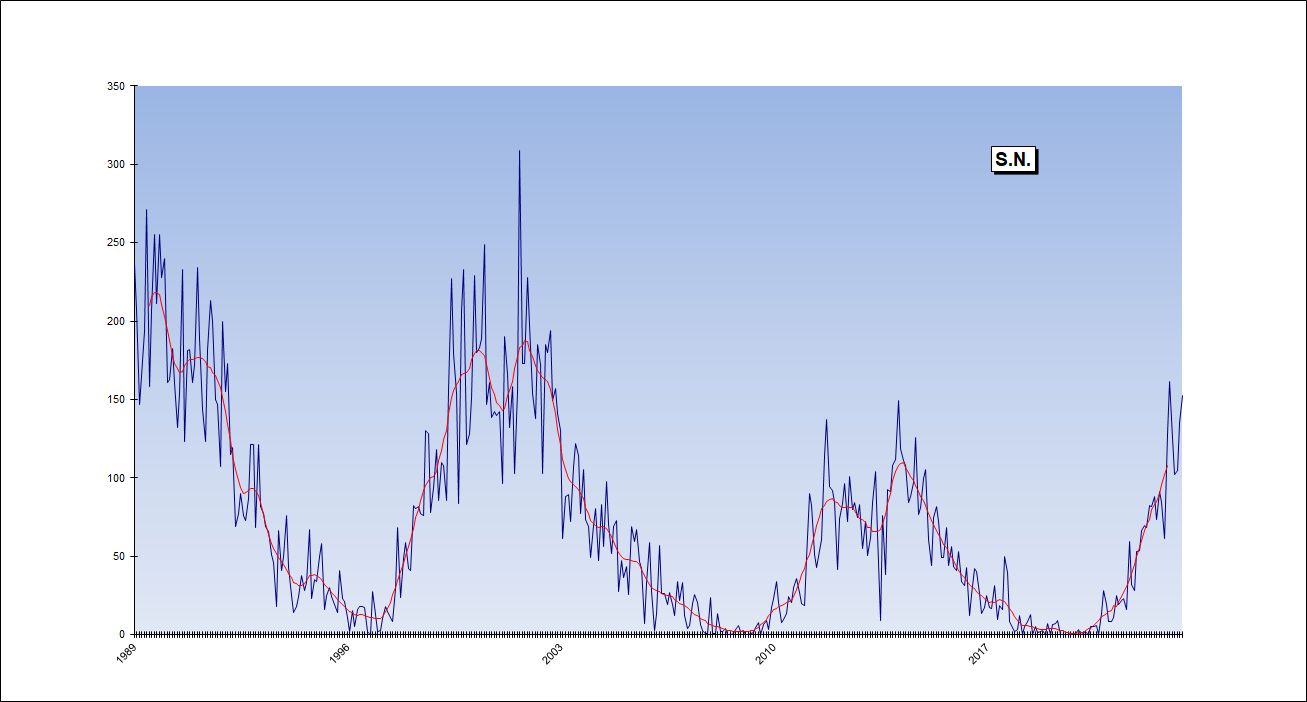
In 1976, the Astronomische Arbeitsgemeinschaft Paderborn proposed a different Wolf number.
The Paderborn sunspot number IS defined as:
|
